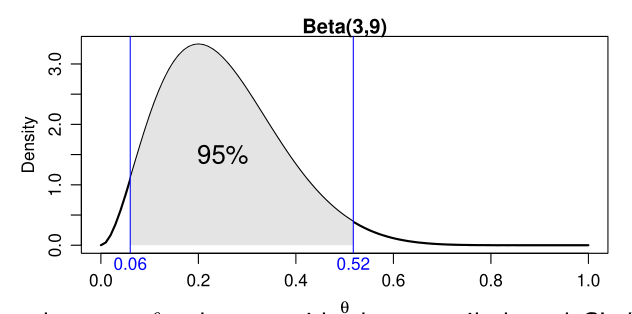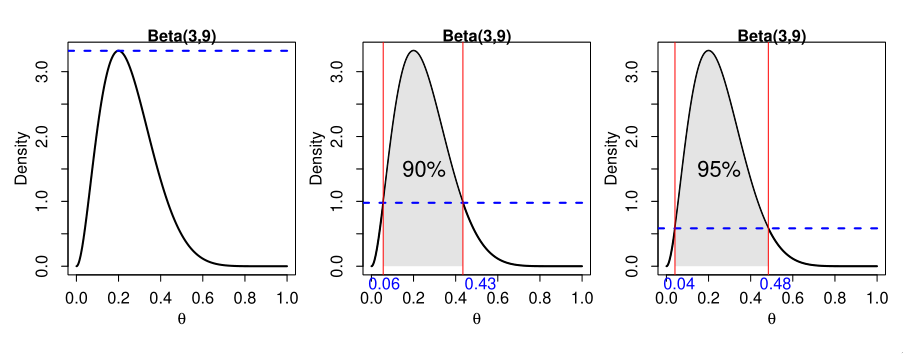Interval Estimation in Bayesian Statistics
Suppose instead of point estimation, we’d like to identify a
region that is likely to contain the true value of parameter
A
Interpreting credible sets is different in Bayesian statistics, compared to frequentist confidence intervals.
In Bayesian statistics, the unknown parameters
The probability that
lies in given observed data is .
In frequentist statistics,
If we could recompute
for a large number of datasets collected the same way, then about of them will contain the true value of
Another way to view this is that frequentist and Bayesian notions of coverage describe pre- and post-experimental coverage respectively. Researchers have shown that Bayesian credible sets constructed via some methods will also have almost the correct frequentist coverage.
Quantile/equal-tails intervals
We find two numbers
The

Figure 1: Quantile-based 95% CI for Beta(3,9)
Highest Posterior Density (HPD) region
The HPD credible set is defined as the set:
where
All points in a HPD region have higher posterior density than points outside the region.
To visualize this, imagine drawing a horizontal line across the graph
at the mode of the posterior distribution, and the pushing it down
until the corresponding values on the

Figure 2: 90% and 95% HPD regions on a Beta(3,9) distribution
Computing HPD requires numerical methods. HPD might not be an interval
if the distribution is multimodal. Some packages like coda assumes
that the distribution is not severely multimodal.
Generally, the quantile-based CI will be equal to the HPD region if the posterior is symmetric and uni-modal, but wider otherwise. For unimodal posterior densities, the HPD interval has the shortest length for the same level of coverage.